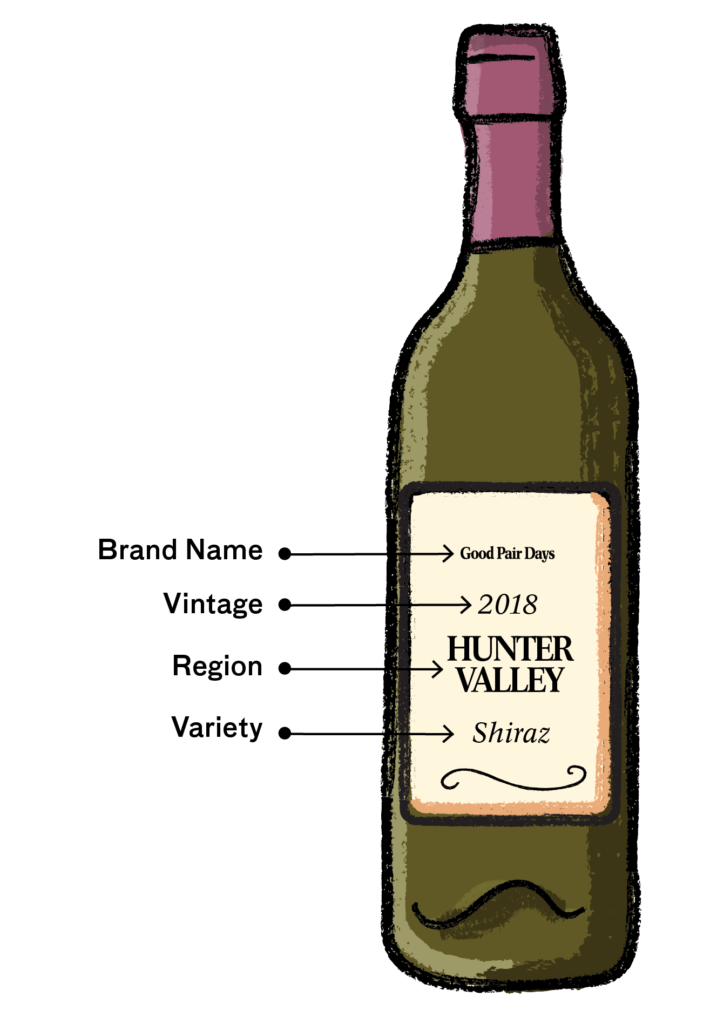
Wine label information is government-mandated. Unfortunately, there are rules within rules, so to make it simple: every wine label must contain a brand name, (e.g.,Yellow Tail); a wine type (name of grape variety, wine color, table wine, dessert wine, et al); an appellation of origin (where the grapes were grown); a bottler’s name and address; the alcohol by volume (this is not a clear-cut number); a sulfite declaration; and the government warning.
Some front label information is discretionary, like the year the grapes were harvested—the vintage date. Producer-generated marketing information is relegated to the back label.
What’s not on the label is important, too. For instance, wines labeled with a single grape variety (Chardonnay, Pinot Noir, etc.) can have other grapes blended into them as long as the grape named on the label is no less than 75% of the blend. Named after a grape variety, these are referred to as “varietal wines.” (Some confuse the adjective varietal with the noun variety.)

Something else you don’t see on the label is a definition for these phrases:
Estate Bottled (name)—the grapes were grown in the named producer’s vineyard and the wine was fermented, aged, and bottled at the named producer’s facility.
Produced and Bottled by (name)—the grapes were grown elsewhere but the wine was fermented aged and bottled at the named producer’s facility.
Vinted and Bottled By (name) or Cellared and Bottled By (name)—the grapes were grown elsewhere, the wine was fermented elsewhere, and the name on the label is the company that blended and/or bottled the wine.
The two touchiest label phrases are “Organic” and “Contains sulfites.”
When grapes are grown organically you’ll see it on the label as “Made (or Produced) with organic grapes”. The grapes will have FDA or other certifications. Organic winemaking, however, is more complicated and too detailed for this venue.
Don’t confuse sulfates with sulfites. Sulfates are added to soaps and detergents; sulfites are added to wine—unless the wine is organic. But even an organic wine can contain sulfites.
Sulfites are a natural by-product of fermented foods, including beer, yogurt, bread, cheese, dried fruits, soy, eggs, tea, vinegar. And since sulfur dioxide is naturally produced by decaying vegetation, sulfites are in some vegetables, including broccoli, cabbage, cauliflower, kale, garlic, onions, chives, and leeks. Sulfites preserve food, but not for long, so to forestall wine from becoming undrinkable, winemakers add more sulfites.
Thus far, asthmatics constitute the only identified population susceptible to sulfite allergies. The problem is that there is no known level of sulfites that will cause a reaction—“contains sulfites” is intended as a warning to a particular population.
Another thing you don’t see on a wine label is a list of ingredients. But there are rumblings between the government and the industry. My bet is that ingredients will one day make their way onto wine labels.
Questions or comments? Email: thomas@alberta.coop




